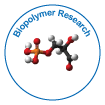Harnessing the Power of Microbial Biopolymers: A Sustainable Approach to Material Innovation
Received: 01-Apr-2024 / Manuscript No. bsh-24-132488 / Editor assigned: 03-Apr-2024 / PreQC No. bsh-24-132488 (PQ) / Reviewed: 17-Apr-2024 / QC No. bsh-24-132488 / Revised: 19-Apr-2024 / Manuscript No. bsh-24-132488 (R) / Published Date: 26-Apr-2024
Abstract
In the quest for sustainable alternatives to traditional synthetic polymers, microbial biopolymers have emerged as promising candidates. These biopolymers, produced by various microorganisms, offer a range of advantages over their synthetic counterparts, including biodegradability, renewability, and often, superior mechanical properties. As the world grapples with the environmental consequences of plastic pollution, the exploration and utilization of microbial biopolymers represent a significant step towards a more sustainable future.
keywords
Microbial biopolymers; PHAs; Research
Introduction
Microbial biopolymers are naturally occurring polymers synthesized by microorganisms such as bacteria, fungi, algae, and archaea. They serve diverse functions in nature, including structural support, energy storage, and protection against environmental stresses. One of the most well-known microbial biopolymers is polyhydroxyalkanoates (PHAs), which are produced by numerous bacterial species under conditions of nutrient limitation. PHAs have garnered attention due to their biodegradability in various environments, including soil, water, and marine ecosystems [1-3].
Methodology
The production of microbial biopolymers offers several environmental benefits. Unlike conventional plastics derived from fossil fuels, microbial biopolymers can be produced from renewable resources such as agricultural by-products, wastewater, and even carbon dioxide. This reduces reliance on finite resources and mitigates the carbon footprint associated with polymer production. Additionally, many microbial biopolymers are biodegradable, meaning they can be broken down by microorganisms into harmless compounds, thus minimizing their environmental impact [4-6].
Moreover, microbial biopolymers exhibit a wide range of properties that make them attractive for various applications. For instance, PHAs possess mechanical properties comparable to conventional plastics, with the added advantage of biodegradability. This makes them suitable for applications ranging from packaging materials to medical implants. Similarly, bacterial cellulose, produced by certain species of bacteria, boasts exceptional strength, flexibility, and biocompatibility, making it an ideal candidate for wound dressings, tissue engineering scaffolds, and other biomedical applications [7-9]
Furthermore, the production of microbial biopolymers can be tailored to meet specific requirements through genetic engineering and fermentation optimization. This allows for the development of biopolymers with customized properties, opening up new possibilities for innovation in material science and engineering. Researchers are actively exploring the potential of microbial biopolymers in areas such as 3D printing, nanotechnology, and biodegradable electronics, where traditional plastics fall short in terms of sustainability and performance.
Despite their immense potential, challenges remain in the widespread adoption of microbial biopolymers. One of the primary hurdles is achieving cost competitiveness with conventional plastics, which still dominate the market due to their low production costs. However, ongoing advancements in bioprocess engineering, strain optimization, and downstream processing are steadily driving down the production costs of microbial biopolymers, making them increasingly economically viable.
Additionally, there is a need for scalable and sustainable feedstock sources for microbial biopolymer production. While agricultural residues and organic waste present attractive options, ensuring their availability without competing with food production or causing environmental harm requires careful planning and resource management. Moreover, the development of efficient biorefinery processes that maximize the utilization of feedstock resources while minimizing waste generation is crucial for the sustainability of microbial biopolymer production [10].
Conclusion
In conclusion, microbial biopolymers represent a sustainable alternative to traditional synthetic polymers, offering biodegradability, renewability, and versatile properties for a wide range of applications. As society strives to address the pressing challenges of plastic pollution and resource depletion, the exploration and utilization of microbial biopolymers hold tremendous promise for driving innovation in material science and advancing towards a more sustainable future. With continued research, investment, and collaboration across academia, industry, and government, microbial biopolymers have the potential to revolutionize the way we produce and consume materials, paving the way for a greener and more resilient planet.
References
- Asnism GM, Thomas M, Henderson MA (2015) Pharmacotherapy Treatment Options for Insomnia: A Primer for Clinicians. Int J Mol Sci 17: 45-55.
- Berridge CW, Waterhouse BD (2003) The locus coeruleus–noradrenergic system: modulation of behavioral state and state-dependent cognitive processes. Brain Res Rev 42: 33-84.
- Prevalence of chronic insomnia in adult patients and its correlation with medical comorbidities. J Family Med Prim Care 5: 780-784.
- Bian ZH, Zhang WM, Tang JY, Fei QQ, Hu MM, et al. (2022) Effective substance and mechanism of Ziziphi Spinosae Semen extract in treatment of insomnia based on serum metabolomics and network pharmacology. Chin J Chinese Materia Med 47: 188-202.
- Hypnotic effect of jujubosides from Semen Ziziphi Spinosae. J Ethnopharmacol 130: 163-166.
- Chen YH, Lan ZP, Fu ZP, Li BL, Zhang ZX (2013) Effect of compound gardenia oil and jujube seed oil on learning and memory in ovariectomized rats. Chin J Appl Physiol 29: 406-409.
- Acetylcholine release, EEG spectral analysis, sleep staging and body temperature studies: a multiparametric approach on freely moving rats. J Neurosci Methods 151: 159-167.
- Feng Y, Wu Z, Zhou X, Zhou Z, Fan W (2006) Knowledge discovery in traditional Chinese medicine: state of the art and perspectives. Artif Intell Med 38: 219-236.
- Garcia-Sainz JA, Romero-Avila MT, Alcantara-Hernandez R (2011) Mechanisms involved in alpha1B-adrenoceptor desensitization. IUBMB Life 63: 811-815.
- Geng X, Li TL (2017) Content Changes of Main Chemical Constituents in Raw Semen Zizyphi Spinosae and Fried Semen Zizyphi Spinosae before and after Compatibility. J Tradit Chin Med 19: 64-67.
Citation: Hoshake B (2024) Harnessing the Power of Microbial Biopolymers: ASustainable Approach to Material Innovation. Biopolymers Res 8: 201.
Copyright: © 2024 Hoshake B. This is an open-access article distributed underthe terms of the Creative Commons Attribution License, which permits unrestricteduse, distribution, and reproduction in any medium, provided the original author andsource are credited.
Share This Article
Recommended Journals
Open Access Journals
Article Usage
- Total views: 92
- [From(publication date): 0-2024 - Feb 04, 2025]
- Breakdown by view type
- HTML page views: 63
- PDF downloads: 29
